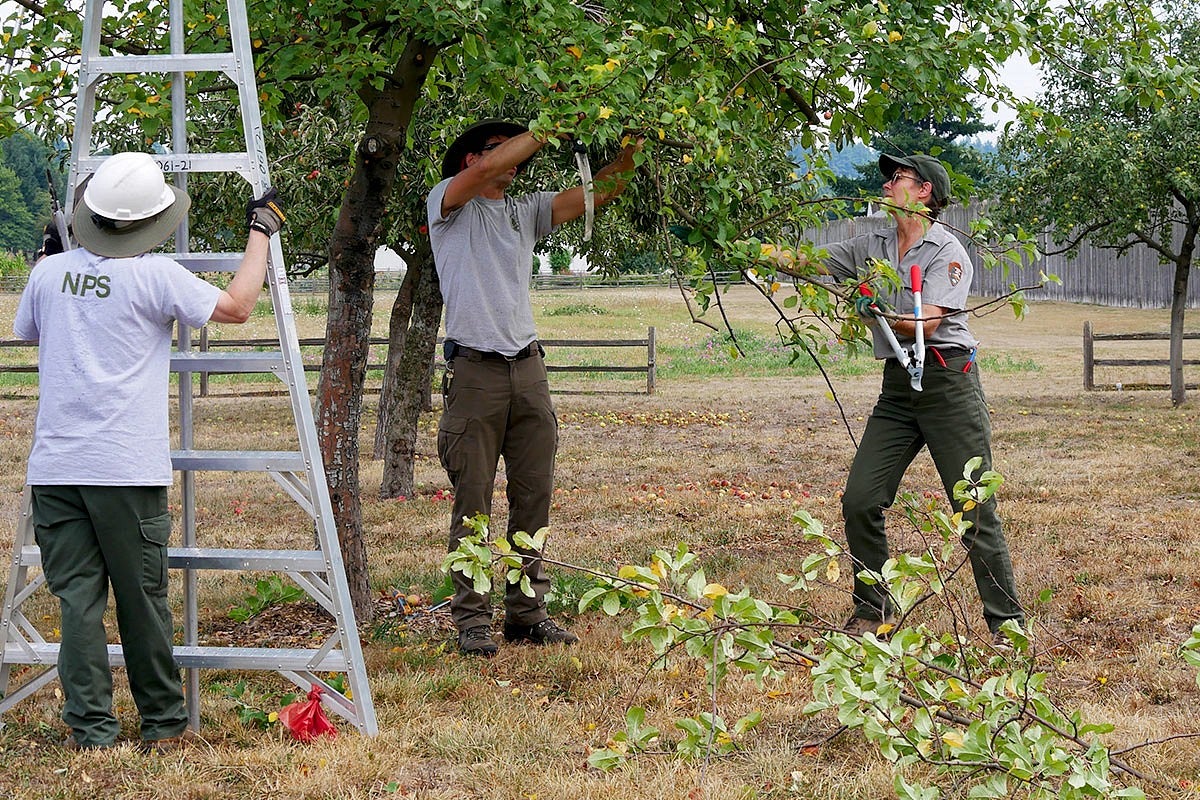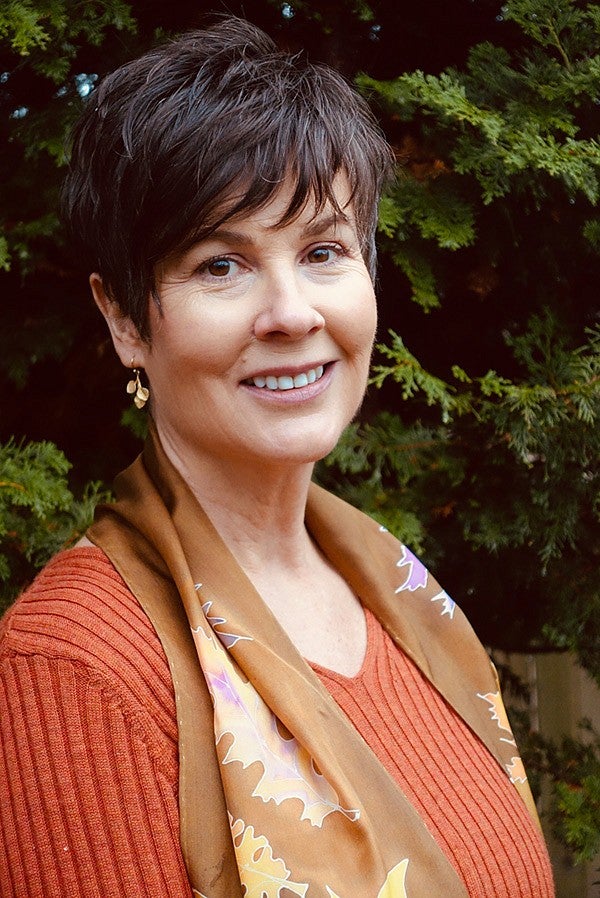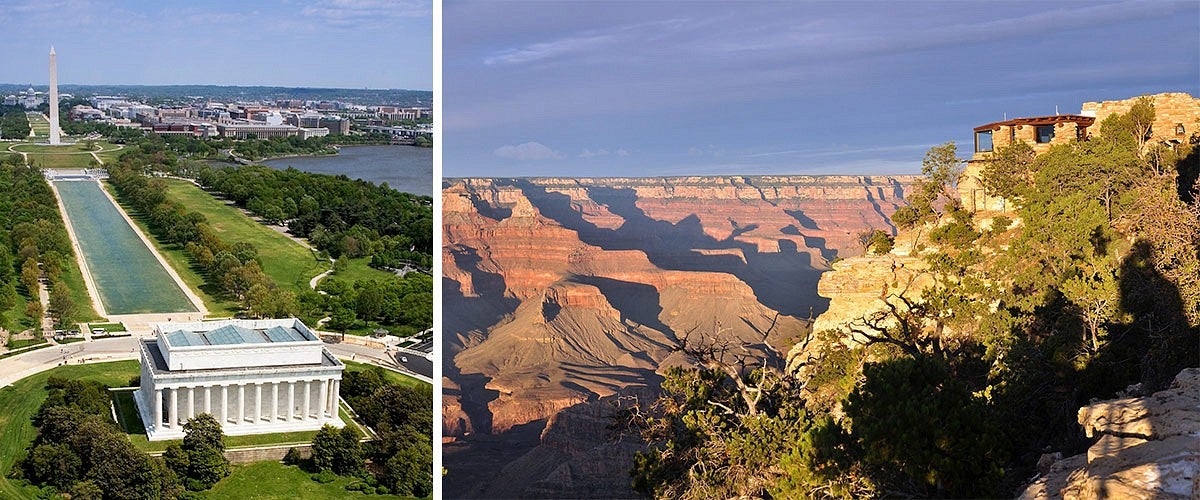
The College of Design is excited to announce the 2020 Ellis F. Lawrence Medalist winner: Landscape Architecture alumna Susan Dolan (BLA ’94, MLA ’96). The medal is the college’s highest alumni honor.
In late January, Dolan will visit the College of Design to accept the medal, give a public lecture, and participate in a variety of events including an experiential learning workshop with students at Dorris Ranch in Springfield.

“The University of Oregon is a huge inspiration to me,” Dolan said. “I’m honored.”
“Selected each year by a group of faculty, the Lawrence Medal is given to an alum with an exceptional record of accomplishments and is an opportunity for the College of Design to highlight the impact of their work,” said Laura Vandenburgh, interim dean. “We are thrilled to bring Susan Dolan to campus as our Lawrence Medalist and have her engage with students and faculty.”
Dolan is a Seattle-based historical landscape architect for the National Park Service (NPS), as well as the manager of the NPS Park Cultural Landscapes Program.
For more than two decades, she has championed the development, protection, and care of some of our nation’s most treasured natural and cultural resources, from Yosemite to Glacier to the Everglades and all the historic gems nestled within.
“My love is not only the landscape but the people in the landscape,” said Dolan of her career. “I love to work directly with the stewards of places. I love to get my hands dirty. I love to physically work on landscapes, and I love to be an advocate and change hearts and minds.”
Lawrence Medal
Public Lecture and Reception
"National Park Service Cultural
Landscape Preservation: A 30-Year
Retrospective and Look Ahead"
4:15-6:00 p.m. Thursday, January 30
115 Lawrence Hall
This event will be simulcast in 451 White
Stag Block in Portland.
In 2014, the College of Design caught up with Dolan for the 100 Stories collection, which shared the experiences of distinguished alumni for the College of Design’s 100th anniversary. Dolan spoke about her role managing cultural landscapes, which are the more than 850 spaces and places within the NPS that are tied to a historic event, activity, or person, or that exhibit other cultural or aesthetic values, such as the Watchmen Observation Station and Trail at Oregon’s Crater Lake National Park or the César E. Chávez National Monument in California’s Tehachapi Mountains.
“Our direction is moving toward building greater resiliency in the cultural landscapes we preserve by using more sustainable practices, focusing more on the health of ecosystems that are entwined with these cultural imprints on the land, and trying to increase their capacity to be more resilient to withstand the changing climate,” Dolan told the College of Design at the time.
Five years on, Dolan says that developing stewardship has become urgent and crucial to the maintenance and preservation of national parks and cultural landscapes. A significant portion of her current work includes helping parks identify deficiencies on the ground so that they can apply for project funding.
“A lot of parks need help,” Dolan said. “Congress is very focused on helping the NPS address the deferred maintenance backlog.” Dolan estimates that deferred maintenance costs total about $12 billion.
Along with financial consulting, Dolan has also been training maintenance staff to preserve the character of landscapes. In August, she taught a workshop at Redwood National Park on how to prune 100-year-old apple trees. If properly pruned, the trees could live another 100 years. Other recent workshops included replanting and pruning historic native plants at Grand Canyon Village and teaching a class about turf at the National Mall in Washington D.C.

“It’s supposed to look like the welcome mat or America’s front yard,” Dolan said. “It’s a beautiful place and it has a high standard of maintenance.” (Fun fact: The National Mall must be aerated and overseeded each month to prevent it from turning hard as concrete.)
Dolan explains that the Cultural Landscapes Program, a relatively nascent discipline within NPS, began in the late 1980s and originally focused on historic research and planning. Now, the program also needs to prioritize stewardship, or the on-the-ground care.
“Most people think of our national parks as scenes or views, maybe from a famous photograph or poster. People forget that those scenes are composed of elements that are constantly growing, changing, moving. And they often don’t realize the impact that we have as visitors,” said Associate Professor of Landscape Architecture Roxi Thoren. “Susan’s work highlights the importance of stewardship of our parks, keeping them healthy and beautiful through normal changes and uses as well as the unpredictable future that climate change will bring.”
The need for stewardship and maintenance has grown for two main reasons. For one, fewer people have the knowledge to be caretakers of their landscapes than a century ago.
“Your average person 50 to 100 years ago would know how to graft an apple tree,” Dolan said. “People were closer to their agricultural heritage.”

And two, the number of national parks and cultural landscapes continues to grow. The number of national parks has doubled since the mid-20th century.
“We’ve grown the system exponentially, and we haven’t had the budget increases commensurate with that,” Dolan explained. “We’ve been cutting corners for a very long time.”
The average person can take easy steps to advocate for national parks, as well, Dolan says, such as visiting parks and sharing these experiences with friends and families and encouraging them to visit, while leaving a light footprint.
“Sincerely, if they have a chance in their own lives to vote their conscience, to be advocates themselves, to practice conservation where they live, I wish they would try and do that, too,” Dolan added.
Dolan says that many of tools and values she needs to serve the NPS were instilled at the College of Design (then the School of Architecture & Allied Arts).
“Undergraduate and graduate school were absolutely instrumental into steering me into this field,” she said. A class on national parks taught by Professor Emeritus and former Dean Robert Melnick “lit a light bulb in me.” Melnick and the landscape architecture program helped Dolan make contacts within the NPS.
“Through Robert I managed to get an internship to assist the person in the role I am in today,” Dolan said.
Dolan has returned to campus several times over the decades to review landscape architecture studios with Melnick, including studios focused on Yosemite Village and César E. Chávez National Monument. For the latter, Dolan and students met Paul Chavez, the son of the late labor leader and civil rights activist, who came to represent the César Chávez Foundation.
“That was a great high for me,” Dolan said.
Dolan will return again this month to accept the Lawrence Medal, which she jokes has been awarded prematurely.
“I want to do a lot more,” Dolan said. “I’m a little bit more than halfway through. I don’t really feel like I’ve hit top speed yet.”
